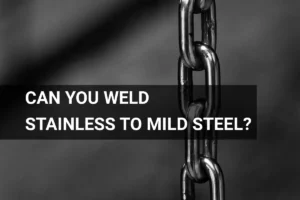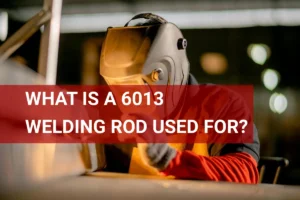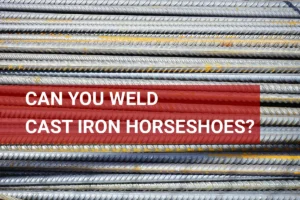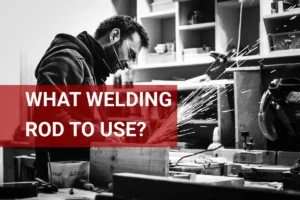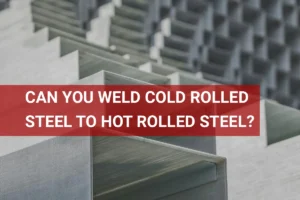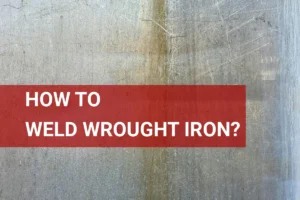What Rod is Used to Weld Stainless Steel to Metal? – Understanding Rod Choices, Types, and Applications
Published on: May 18, 2025 | Last modified: March 4, 2025
By: Joe Carter
A rod is a long, cylindrical piece of material used in welding. It helps create joints between metals by melting and fusing them together.
I often used to be asked, what rod is used to weld stainless steel to metal? It’s crucial to choose the right rod because it affects the strength and integrity of the weld. Personally, I’ve seen projects go south when the wrong rod got used; it’s a costly mistake.
In this guide, we’ll dive into how rods work for welding, different types of rods, essential steps for welding stainless steel, factors that influence rod selection, troubleshooting common issues, tips for aftercare, typical applications, and some alternative options. Whether you’re figuring out what type of welding rod is used for stainless steel or what welding rod to use for 304 stainless, this article covers everything you need to know.
Contents
- What Rod is Used to Weld Stainless Steel to Metal?
- How Does the Rod Used to Weld Stainless Steel to Metal Work?
- Types Of Rods Used for Welding Stainless Steel
- Steps to Weld Stainless Steel Using Appropriate Rods
- Factors Affecting Rod Selection for Welding Stainless Steel
- Choosing the Right Filler Material: Additional Considerations
- Common Issues and Troubleshooting
- Typical Applications Of Welding Stainless Steel
- Other Options You Can Consider for Welding Stainless Steel
- Frequently Asked Questions (FAQs)
- Conclusion
- References
What Rod is Used to Weld Stainless Steel to Metal?
For stainless steel, use a 308L welding rod, ideal for 304 stainless. This rod features low carbon, preventing carbide precipitation. It’s perfect for appliances, piping, and food processing due to its corrosion resistance.
How Does the Rod Used to Weld Stainless Steel to Metal Work?
The rod used to weld stainless steel to metal mainly involves stainless steel electrodes. These electrodes significantly affect joint quality. Common types include 308L, 309L, and 316L rods, with diameters typically ranging from 1.6 mm (1/16 in) to 4.0 mm (5/32 in). Using the right rod can increase corrosion resistance by 75%, depending on the alloy composition.
When welding 304 stainless steel, a 308L rod is often recommended. This rod closely matches the metal properties and ensures a strong, durable weld. Proper selection and application can prevent issues like cracking or poor fusion.
I once had to weld stainless steel to mild steel for a custom project. I used a 309L rod, and it turned out great! It provided a solid joint and helped me avoid corrosion issues.
Types Of Rods Used for Welding Stainless Steel
ER308L Stainless Steel Filler Rods
ER308L rods are suitable for a wide range of stainless steel applications. Their low carbon content reduces the risk of carbide precipitation. Set your welder at 18 volts and feed the rod steadily to ensure a consistent pool. When it comes to refining your skills, understanding various techniques for removing welds effectively can be invaluable.
ER316L Stainless Steel Filler Rods
ER316L rods are ideal for corrosive environments. They offer excellent corrosion resistance, especially in marine applications. Preheat the area slightly to reduce cracking, and maintain a constant motion for even heat distribution.
ER309L Stainless Steel Filler Rods
ER309L rods are perfect for joining stainless steel to dissimilar metals like mild steel. They create a strong bond in mixed-metal welding. Maintain a steady arc and keep the filler within the joint to prevent inconsistencies and ensure a solid weld.
ER2209 Stainless Steel Filler Rods
ER2209 rods are designed for welding high-strength duplex stainless steels. They provide specific corrosion resistance, making them ideal for oil and gas applications. Keep your travel speed consistent to avoid overheating, which could weaken the weld.
ER321 Stainless Steel Filler Rods
ER321 rods resist intergranular corrosion in high-temperature settings. They are beneficial for applications involving heavy heat cycles. Use a constant speed and ensure proper cleaning of the materials to prevent contamination for optimal welds.
We have now covered the various rods used for stainless steel welding. Next, we will discuss the steps to effectively weld.
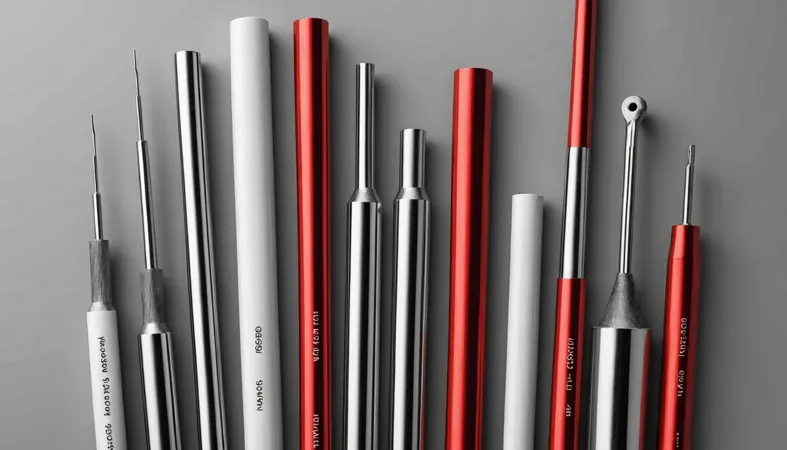
Steps to Weld Stainless Steel Using Appropriate Rods
Now, we’ll cover how to select the right rod for stainless steel welding. Follow these steps for the best results!
Select the Proper Rod
Choose a rod based on the type of stainless steel you’re using. For example, if you’re welding 304 stainless steel, use an ER308 or E308L rod. These rods contain 18% chromium and 8% nickel, matching the metal’s properties. Selecting the right rod is crucial for a strong, durable weld.
If you need to weld dissimilar metals, consider using a 309 rod. This rod effectively bonds stainless steel to carbon steel. Remember, the rod diameter should match (1/16 to 1/8 in, About 1.6 To 3.2 Mm) your project needs for optimal arc stability. Understanding the techniques for welding specific components, like fuel containers, can further enhance your welding skills. For comprehensive guidance on this, check out how to weld a gas tank.
Prepare the Base Metals
Before welding, clean your base metals thoroughly. Remove grease, rust, and contaminants using a wire brush or a chemical solvent. Skipping this step can lead to weak welds or defects. I often use a stainless steel brush to minimize iron particle contamination, especially when I consider the properties of different welding by metals.
It’s crucial to disconnect important vehicle components to ensure safety while welding; you can find more information on what to disconnect when welding.
Also, ensure a tight fit between the pieces. Gaps can result in poor penetration. Use clamps to hold everything in place while you work. A good fit reduces the need for filler metal, allowing for a cleaner weld.
Set Up the Welding Equipment
Adjust your welding machine settings as needed. For MIG welding, set the voltage and wire feed speed based on material thickness. For 1/8 in (3.2 Mm) thick stainless steel, use 18-22 volts and a wire feed rate of 200-250 in/min (5080-6350 Mm/min).
For TIG welding, set the amperage to about 1 Amp per 0.001 in (0.025 Mm) of material thickness. I find starting lower and adjusting upwards works best for control. Check your backup gas supply and ensure shielding gas, like argon, flows properly.
Weld According to Specifications
Begin welding with a steady motion along the joint. Maintain a consistent travel speed for uniform heat distribution. If you’re using a rod, hold it at a 15-degree angle for effective penetration. Avoid excessive weaving, as it can weaken the weld.
Monitor the weld pool closely. If it’s too sluggish, the heat might be too low. Adjust on the fly—typically, you want a shine on the bead to indicate proper fusion. Be patient and remember that practice makes perfect!
You should now have a good understanding of welding stainless steel with the right rods. In the next part, we’ll discuss factors influencing rod selection.
Factors Affecting Rod Selection for Welding Stainless Steel
What factors influence rod choice for welding stainless steel with other metals?
Type Of Stainless Steel
The grade of stainless steel significantly impacts rod selection. For instance, when welding 304 stainless (18% Chromium, 8% Nickel), use a 308 rod. This composition helps prevent cracking and enhances corrosion resistance.
Welding Position
Your welding position affects penetration and bead shape. Flat and horizontal positions are easier, so you might choose a rod with lower stiffness for overhead welding to keep the metal fluid and prevent sagging.
Joint Design
The joint design can dictate rod performance. For a V-groove joint, I’d typically use a round rod for better access and heat distribution, ensuring a strong weld and good fusion.
Base Material Thickness
Thicker materials need rods with a higher amperage rating. For example, when welding 1/4-inch (6 Mm) thick metal, a 7018 or 312 welding rod provides the strength and heat needed for a solid joint. To understand the different types of materials, it’s important to explore the various welding rods available that suit specific applications.
Welding Process Used
The welding process (Like SMAW or GTAW) influences rod choices. In TIG welding (GTAW), you might prefer a filler rod with less alloying for a cleaner finish, while stick welding (SMAW) may require a thicker, more robust rod.
We have now covered factors influencing rod selection for stainless steel welding. Next, we will discuss selecting the appropriate filler material.
Choosing the Right Filler Material: Additional Considerations
Let’s look at some critical factors when selecting the right rod to weld stainless steel to metal.
Corrosion Resistance Factors
Corrosion resistance is essential! The chosen rod must match the application environment. When selecting a rod, consider:
- Environment: Areas with high chloride exposure need rods like 316L for better protection.
- Temperature: For high-temperature settings, opt for a rod like ER321 to enhance resistance.
Comparison of Common Welding Rods for Stainless Steel
| Rod Type | Strength (MPa) | Corrosion Resistance | Best Application |
|---|---|---|---|
| ER308L | 520 | Good | General stainless to stainless |
| ER316L | 580 | Excellent | Marine and food processing |
| ER309L | 600 | Good | Dissimilar metals welding |
| ER321 | 590 | Very Good | High-temp applications |
Alloy Composition Matters
The alloy composition also matters. For instance, the percentage of nickel and chromium greatly affects the weld’s durability. Higher chromium provides better corrosion resistance. When you choose your rod, always check the specifications for optimal performance!
We covered selecting appropriate filler materials and key considerations. We will now cover common issues and troubleshooting techniques.
Common Issues and Troubleshooting
Let’s look at specific problems that can occur with the rod.
Inconsistent Weld Appearance
The rod may produce inconsistent color and texture. Identify this by examining the weld surface closely. To fix it, maintain a steady travel speed and adjust the amperage as needed.
Weld Puddles Not Forming Properly
If the rod isn’t preheating the metal adequately, puddles won’t form. Check the voltage and ensure you’re using the correct rod size. Increase the heat and adjust the rod’s angle.
Undercutting Of Base Metal
Undercutting occurs when the rod’s heat is too high, gouging the base metal. Notice that it’s smoother near the weld edges. Lower the heat and adjust the speed to prevent this.
Cracking in the Weld Bead
A cracked weld bead often results from improper rod selection. Check for visible cracks with a magnifying glass. Use the appropriate filler metal and adjust the cooling rate to reduce stress on the bead.
Inadequate Penetration
Inadequate penetration means the weld isn’t strong. You can spot this by checking the bevel. Increase the travel speed and ensure proper cleaning of the material before welding.
Typical Applications Of Welding Stainless Steel
People often use specific rods for stainless steel welding. Its applications include:
- Food Processing Machinery: Type 308L rods are preferred for bonding food-grade stainless steel due to their corrosion resistance and hygienic properties. They’re highly valued in the food industry.
- Pipelines: For gas and fluid transport, E316L rods are used. They provide exceptional strength and resistance to chloride environments. They’re common in industrial projects.
- Aerospace Components: ER70S-6 rods bond aluminum and stainless steel components. These rods ensure lightweight yet sturdy aircraft parts. They’re vital in the aviation sector.
- Architectural Structures: 309L rods improve weld strength and aesthetic appeal in skyscrapers. This application is increasingly used to manage stress and weight.
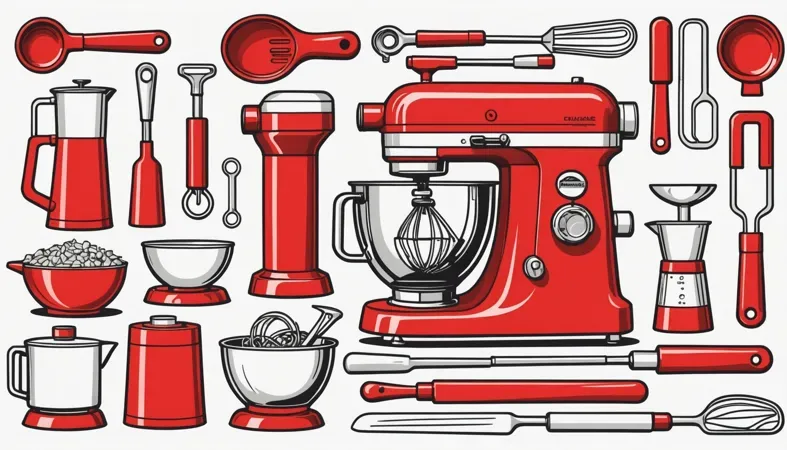
Other Options You Can Consider for Welding Stainless Steel
In some situations, you might prefer methods other than using a specific welding rod. For instance, gas tungsten arc welding (GTAW) often gives great results on stainless steel. Products like ER308L filler wire can work wonders in achieving strong joints, especially in thin materials.
If you’re in a hurry, you might choose flux-cored arc welding (FCAW) using E71T-11 wire. This method is faster and easier for outdoor work. Plus, it helps maintain even heat, minimizing distortion—crucial when you’re blending stainless steel with other metals.
Frequently Asked Questions (FAQs)
Now let us look at some common questions about welding. I typically get asked these a lot!
What Rod to Use When Welding Stainless Steel?
When welding stainless steel, it’s crucial to know what rod to use. For most applications, a 308 or 316 stainless steel rod works best. These rods provide strong corrosion resistance and can handle high temperatures, making them ideal for various projects.
Will 7018 Weld Stainless to Mild Steel?
No, a 7018 rod won’t effectively weld stainless steel to mild steel. This rod is designed for low-hydrogen welding on carbon steel. For stainless to mild steel, you should use a filler like 309L to get strong welds and improve corrosion resistance.
How Do You Weld Stainless Steel to Metal?
To weld stainless steel to metal, prepare your surfaces well and use the right filler material. Cleaning the areas ensures better adhesion. For effective results, explore techniques in stainless steel welding, and choose a compatible rod like 309L to blend stainless and mild steel together without compromising strength.
When welding in vertical positions, understanding the techniques to weld uphill effectively is crucial for achieving strong and consistent welds.
Can You Weld Stainless Steel With 6011 Rods?
Yes, you can weld stainless steel with 6011 rods, but it’s not the best choice. This rod is for mild steel and can cause poor penetration and corrosion. If you’re working with stainless steel, opt for a dedicated stainless welding rod like 308L for better results.
What is the Best Welding Rod for Galvanized Steel?
The best welding rod for galvanized steel is typically a 308L or a 316L welding rod. These rods can effectively cut through the zinc coating and create strong joints. Additionally, using the right rod prevents issues like weld porosity and promotes durability. If you’re working with more delicate materials, it’s crucial to know the techniques for welding thin metal.
What Welding Rod to Use on Steel?
To weld steel, rods like E7018 or E6013 are popular options. The E7018 rod is low-hydrogen, providing a smooth and strong weld. E6013 offers versatility in various positions, making them ideal for different applications in the construction world.
Conclusion
You made it to the end, and now it’s time to recap. We covered the types of rods used for welding stainless steel, how they work, important factors for choosing the right rod, and steps you need to follow. We also dove into troubleshooting common issues, aftercare tips, typical applications, and alternative options for your welding projects.
So, what rod is used to weld stainless steel to metal? In simple terms, austenitic stainless steel rods like ER308L are popular choices. They provide great compatibility with stainless steel. Don’t hesitate to get in touch for further assistance or if you have more questions about the right welding rod for your specific project.
To explore more comprehensive articles on welding techniques and tips, visit our homepage: What is Welding, where you can find all the information you need to enhance your welding skills!
References
- Lincoln Electric. (2020). The Procedure Handbook of Arc Welding (15th ed.). Cleveland, OH: Lincoln Electric Company.
- International Organization for Standardization. (2017). ISO 3834: Quality Requirements for Fusion Welding of Metallic Materials. Geneva, Switzerland: ISO.
Joe Carter is a retired welding professional with over 40 years of hands-on experience in the industry, spanning ship repair, structural welding, and even underwater projects. Joe is a master of MIG, TIG, and Stick welding. Passionate about mentoring the next generation of welders, Joe now shares his decades of expertise and practical insights to help others build rewarding careers in welding.
Construction, Filler Metal, Metallurgy, MIG Welding, Rod Selection, Stainless Steel, Welding, Welding Rods, Welding Techniques
